Stuart R. West's Blog, page 48
December 9, 2016
The Log of Controversy
 For two months, I've been battling the trash-men in an epic war of stupidity, arrogance, pride and Americana! Hell, yeah!
For two months, I've been battling the trash-men in an epic war of stupidity, arrogance, pride and Americana! Hell, yeah!A little back story... Our huge oak tree in the front yard (biggest in the city--like everything in America!--and apparently a historical landmark) decided to shed one of its honkingly large branches. Weighing in at about 140 pounds, six foot long and fourteen inches around, it was an unwieldy eyesore.
The first day of the month was coming up. Our trash collectors have publicly announced that on first day of the month, every resident can put out two large items. No matter how big or who it is, they'll take it and pollute the world elsewhere.
I put The Limb out curbside. My new nemesis's ("nemesi?") bypassed it.
Jerks! Oh, it's so ON!
The next week, regular trash pick-up day, I thought I'd play fair (ha-ha, very funny guys, good time had by all, now pick up the damn trash), and set The Log into the trash bin. Sure, it stuck out like a broken finger, but, hey, that's what trash guys are for. Deal with it.
These jokers come along, jump out of the truck, pick up The Log and heave it into my yard.
Not only was it now ON, it couldn't be turned off! (In early retirement, I have a lotta spare time).
I went on-line, did my duty as a True American and tried to raise some healthy ire. I got nowhere. Further research led me to the trash guys' website ("Sure as shootin', everyone's rootin' for garbage!"). A glaring and ridiculously blaring statement proclaimed "limbs and foliage must be tied together in bunches no longer than three feet in length." No reason whatsoever given. Just the trash guys flexing their dirty muscle.
With no electric saw in the garage, I turned to ol' faithful, a rusty saw I'd inherited from the Civil War or something. As my mom would say, " it couldn't cut hot butter."
It was time to go tricky, covert ops. I took The Log to the street. I lifted it, whacked it down to break it apart. Nothing. I climbed a ladder perched onto my house, hefted The Log up. Dropped it on the driveway. Stubbornly still in one piece.
Dragging The Log like Linus with his blanket, head down and defeated, I propped the controversial limb up against the street lamp pole, hoping the trash villains of my nightmares would have second thoughts the following day.
Again, they ignored it. They tossed it into the street.But could it be? An early Christmas miracle? The center of The Log had weakened. Further chipped away by ravenous squirrels. With a mighty Hulk-like roar, one born of two months of frustration, I picked the nightmarish limb up. Smashed it down. HULK SMASH! TWO PIECES!
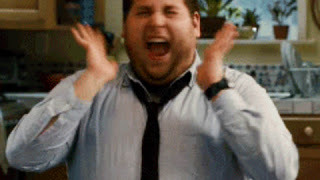 All that morning, I secretly hovered by the window, waiting to see if the devious trash monsters would pick up the two chunks I cleverly camouflaged inside the trash bin.
All that morning, I secretly hovered by the window, waiting to see if the devious trash monsters would pick up the two chunks I cleverly camouflaged inside the trash bin.SUCCESS! High fives all around! Boo-yah, that's how you do it!
Published on December 09, 2016 03:00
December 2, 2016
Return to the Disturbed Mind of Filmmaker Chris LaMartina! (Part #2)
Dark comedy filmmaker Chris LaMartina is too prolific and interesting to contain within one blog post! Here's the stunning conclusion (Hyperbolic Overload! KaPOW!):
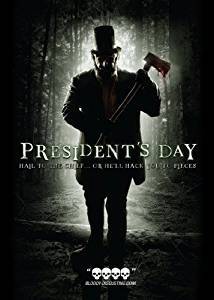 SRW: We’re up to President’s Day, clearly your ode to late ‘70’s/early 80’s slasher films. A holiday not yet cinematically staked! And the killer’s mask/costume is nearly as iconic as some of the more famous films in the genre. This is a film rife with potential for a sequel. Is it coming, Chris?
SRW: We’re up to President’s Day, clearly your ode to late ‘70’s/early 80’s slasher films. A holiday not yet cinematically staked! And the killer’s mask/costume is nearly as iconic as some of the more famous films in the genre. This is a film rife with potential for a sequel. Is it coming, Chris?CL: We actually did a faux sequel trailer for our now defunct web series, Lost Trailer Park. Here it is! https://www.youtube.com/watch?v=uQHfsZ-p7Gg
SRW: You’ve done your homework. All the slasher staples are here: mean high school girls, resourceful good girl, outsider boy hero, red herrings, moronic bullying jocks, dumb/abusive/clueless teachers, fat “funny” party animal kid, creepy janitor, musical “stings.” A checklist of greatest hits. Which slasher flicks inspired you?
CL: The “Sleepaway Camp” movies… “Return to Horror High”… Those are my favorite slashers by far. I think you have to have a sense of humor when it comes to slasher flicks because of their formulaic nature. I think the examples I cited present a ‘fun’ approach to the typical sex and violence tropes that populate every slasher movie.
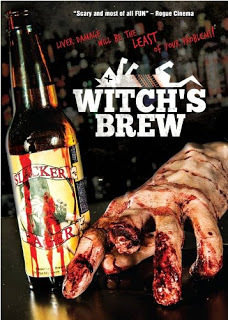 SRW: Witch’s Brew is a tale of slackers, pretentious art-posers, witchcraft and micro-brewing gone horribly bad (tailor made for me!). Chris, you’re certainly not afraid of gore or bodily dysfunctional grotesqueries. I gotta admit some of it’s a bit much for me at times. Grossest film I’ve seen since (the original) Cabin Fever. Do you ever feel you’ve gone over-board? How much is too far? Do comedic elements take a bit off the edge? CL: I don’t think I’ve ever gone overboard with the gore because I don’t think I’m really making brutal or mean-spirited films. So, when you suggest the comedic elements take the edge off… I’d agree. Those magic trick type/almost gross out moments are what provide the cushion… it’s wild and creative instead of nasty and depressing.
SRW: Witch’s Brew is a tale of slackers, pretentious art-posers, witchcraft and micro-brewing gone horribly bad (tailor made for me!). Chris, you’re certainly not afraid of gore or bodily dysfunctional grotesqueries. I gotta admit some of it’s a bit much for me at times. Grossest film I’ve seen since (the original) Cabin Fever. Do you ever feel you’ve gone over-board? How much is too far? Do comedic elements take a bit off the edge? CL: I don’t think I’ve ever gone overboard with the gore because I don’t think I’m really making brutal or mean-spirited films. So, when you suggest the comedic elements take the edge off… I’d agree. Those magic trick type/almost gross out moments are what provide the cushion… it’s wild and creative instead of nasty and depressing.Now granted, “Witch’s Brew” does have some intense scenes- Max’s death in the first few minutes come to mind, but we included that scene (a Boy Scout being burnt alive by witches) to increase the wickedness of our villains. That’s a lesson we learned from Blake Snyder’s “Save the Cat” books- Make your bad guys BADDER!
SRW: At times, as in many of your films, the secondary characters are more likable and empathetic than your leads. I’m thinking Preston, in particular, and the “Hi-Ho Silver” bar-keep guy. Very good actors. I also enjoyed the lounge singer, who I later realized was your dad. Talk about utilizing resources!
CL: I just really love telling stories with ensemble casts and it’s those minor roles that folks can have fun with because they have to get to the punch so quickly. I grew up in a family with lots of cousins, aunts, and uncles- folks I didn’t get to see all the time, but were memorable in a variety of ways. I try to pepper our films with similar injections of personality as much as possible. Besides, if there’s going to be a character in our story, why not give them something that stands out?
And yeah, my Dad has played minor roles in every one of my films actually- he’s the devil bartender in “BoL”, the science teacher in “President’s Day”, the governor in “WNUF”.
The most awkward role for me was when he was one of the clients in “Call Girl of Cthulhu”… that was right before Melissa (the call girl herself) started dating. It was pretty funny when she showed up for a family dinner weeks later and we had to explain that my Dad had already met her.
SRW: All right! Odd choice, I know (and I’m probably alone), but next we chat about my favorite of your films, the WNUF Halloween Special. Okay, first of all, Chris, you had to know the title is terrible from a marketing aspect. At first I stayed away because I thought it was a wrestling event!
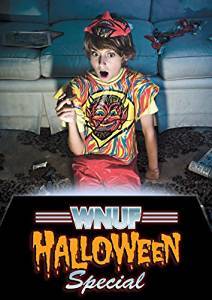 CL: Hahaha. Well, most people who know my work know that I start each project with a title first… but WNUF was the opposite. We wanted to make a found footage flick, we broke the mold a bit, and then… when it came time for a title… our traditional goofy titles didn’t really work… so we wanted to call the flick something you’d read on the side of a taped off of tv VHS spine. We needed a title that was realistic for the found footage angle, but also made it memorable/identifiable for horror/Halloween fans. There had been many times over the years when I’d find a VHS tape at thrift store or yard sale that had “Halloween” or an October date scrawled on the label that made it obvious I need to take a chance on ‘em. That was the strategy behind the full title for WNUF.
CL: Hahaha. Well, most people who know my work know that I start each project with a title first… but WNUF was the opposite. We wanted to make a found footage flick, we broke the mold a bit, and then… when it came time for a title… our traditional goofy titles didn’t really work… so we wanted to call the flick something you’d read on the side of a taped off of tv VHS spine. We needed a title that was realistic for the found footage angle, but also made it memorable/identifiable for horror/Halloween fans. There had been many times over the years when I’d find a VHS tape at thrift store or yard sale that had “Halloween” or an October date scrawled on the label that made it obvious I need to take a chance on ‘em. That was the strategy behind the full title for WNUF. SRW: And the subject matter! Bold. More so than all the gore or horror you can toss at an unsuspecting viewer. The film reminds me of the notorious ’92 BBC Ghostwatch film that apparently freaked out the viewing TV audience when screened. Like Orson Welles’ War of the Worlds radio presentation, Ghostwatch was presented as a live, true event about investigators visiting a haunted house. People bought into it. Anyway…the WNUF Halloween Special plays out that way as well. It’s very realistically presented. Was Ghostwatch an inspiration, Chris?
CL: That’s the funny thing! I literally had never heard of Ghostwatch until we were shooting. Jimmy had done some research on the concept right before we started filming, but it was a little too late by then. I, myself, didn’t watch Ghostwatch til about 3 months ago… and I’d be lying if I said I finished it. :X
SRW: Oh, c'mon! Ghostwatch is great!
Here’s the thing, though…at least half of WNUF's running time is filled with commercials, the kind you used to see on UHF stations in the late ‘80’s. Clearly, you put a lot of care and sweat into painstakingly producing these. Couldn’t have been easy. Was it worth it?
CL: Yes. Absolutely. Making the commercials was my favorite part! I’d write/edit about 2 a day with myself as a voiceover track. I’d come home from work on my lunch break and hammer through. They were so much fun to create. Seriously, working in marketing, my brain is just a vast wasteland of goofy slogans and terrible puns. Plus, some other filmmakers helped out here too and they turned in some excellent stuff- most notably Shawn Jones (Phil’s Carpet Warehouse) and Jim Branscome (Parents Against Partying).
SRW: I liked how you didn’t go for the cheap parody punch-lines in the faux ads. Totally transported me back to watching fuzzy, late-night TV, the only way we could back in the day (You kids get outta my yard!). Chris, I’m curious as to how the WNUF Halloween Special was received. I’m sure some people simply didn’t get it.
CL: It’s been our greatest success, but you're right… you either love it or hate it. We set out to make a movie that nobody else was crazy enough to make. We were those crazy nobodys.
SRW: Good on you! Finally, your latest film, Call Girl of Cthulhu. It has to be the only film I’ve ever seen that promotes both safe sex and H. P. Lovecraft. A supernatural P.S.A! Carter’s also one of your most empathetic protagonists. I believe it’s your first love story angle I completely bought into. Not what I expected, but satisfying in an underdog way. Um, until the ending. Which I simply cannot forgive you for.
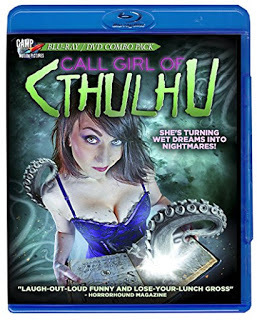 CL: Hahaha. It’s definitely the most vocal audience reaction I’ve ever received when “YOU KNOW WHAT” happens… and yeah, to be honest, after “Witch’s Brew”… I wanted to make a romantic comedy… but it just wasn't in the cards… until we figured out how to craft “Call Girl of Cthulhu” into a romantic horror sex comedy. ;) SRW: Your films always look great, belying the low budget. Each one is more impressively mounted, Cthulutopping the list. Keep going.
CL: Hahaha. It’s definitely the most vocal audience reaction I’ve ever received when “YOU KNOW WHAT” happens… and yeah, to be honest, after “Witch’s Brew”… I wanted to make a romantic comedy… but it just wasn't in the cards… until we figured out how to craft “Call Girl of Cthulhu” into a romantic horror sex comedy. ;) SRW: Your films always look great, belying the low budget. Each one is more impressively mounted, Cthulutopping the list. Keep going.CL: Thanks! It’s tough to match our budgets with our ambitions… and usually that’s where we get into trouble… but we try our best to deliver quality and most importantly, memorable stories.
SRW: After working my way through (most of) your filmography, two things stand out: you utilize many of the same actors in different roles, fascinating to watch; and your segue-ways from scene to scene has grown in your ability to evoke a laugh through clever editing.
CL: To me, movies are like summer camp. We hope every person we like can come back for the next one. Sometimes they do, sometimes they can’t. Sometimes we write roles specifically for actors we love and that’s something I hope never changes. As for editing, all of those visual punchlines are groundwork laid in the scripts- so I can’t take all the credit for those. Although, I think we definitely overdid em with “Call Girl of Cthulhu”.
SRW: What movie’s up next, Chris?
CL: We’re halfway done production of our new flick- a click bait horror satire called “What Happens Next Will Scare You”. It’s a viral video anthology flick and we start shooting the wraparound segments in November. It’s definitely a different type of style for us- with long duration takes and more traditional found footage elements, but we’re having a lot of fun making it and I’m curious to see the reaction. Some characters from WNUF Halloween Special even return!
SRW: Your movies aren’t for everyone. But I like ‘em. Lots. So, folks, check out Chris’ films. And if you don’t like ‘em, blame Chris. Thanks for dropping by, Chris, and pimp away your Midnight Crew film productions!
CL: Thanks so much, brother.
Please follow me on Twitter, friend me on Facebook, and like the Midnight Crew Studios Facebook page as well!
Published on December 02, 2016 03:00
November 25, 2016
Queer!
 Growing up, my dad and mom never talked about sex.
Growing up, my dad and mom never talked about sex.Mom insists she did. Right, whatever. Nothing, nada, zilch, ground zero. (Then again, Mom doesn't remember feeding me butter and sugar sandwiches for lunch. She's not the most reliable witness.)
In fourth grade or so, I was on the school bus and the tougher, scarier, older kids (the ones who had breath and faces sliced like salami) called one of their victims "queer." I took note of this strange new word. No idea what it meant, just knew it was BAD. And I wanted to be bad. So bad, girls would want to hold my hand and boys would run in fear. Because that's what fourth grade boys care about.
That week, I experimented with my new perceived Badness. I called my older brother "queer." You know, just testing the waters. Jumping Jehoshaphat, I wasn't prepared for the outcome. Dad yanked me onto the porch like I'd just spat in the face of Billy Graham.
"Son, don't call your brother queer!"
"Why? Everybody does it."
Dad waffled. Mom, wearing a blood-orange blush and matching apron, scurried into the kitchen.
"It's a bad, bad, bad word," continued Dad.
"Well, the other kids--"
"Listen to me! Don't ever say it!"
"Why? What's it mean?"
"It means when men rub their pee-pees against one another and hard stuff comes out!"
Whaaaat?
For years, Dad's definition of "queer" baffled me. Kinda scared me, too. I mean I didn't want cement pouring out of my penis. It sounded horribly painful. Everyone would know it, too, a queer scarlet letter of shame.
So, boom, there was my first (and only) lesson about sex from my parents. I didn't even know what sex was. But Dad made certain I was on board about not being "queer."
But...there came a time when rebellion kicked in. Hell, yeah! My own personal revolution behind bathroom doors! Completely by accident, I began exploring myself. An innocent stroke here, there...and there and there and there. Things started feeling good. For a long time, I was terrified of what would happen if I continued. I mean, I didn't want to be queer, so I always withdrew, strangely unsatisfied.
Until that one fateful day when I threw caution to the wind and let it ride.
Due to the outcome, I hung my head in shame, absolutely knew I crossed the no-return "queer" border.
I worried for months. Feared going to Hell. The shame of being "queer." I still didn't understand the concept, not really, but Dad thought being queer was something awful so it had to be terrible.
Still it didn't deter my bathroom visits. Just try and stop me.
After a while, I wondered if there might be more to this queer business than Dad let on. Covertly, I eavesdropped on locker room talk, lavishly worshiped dog-eared National Geographic magazines and (the extremely soft side of) Sears catalogs. (Kids don't know how lucky they have it today with the internet; we had to make do with barely marginally sexy basics.) My younger brother and I bought used racy paperbacks, discussed them in private (Portnoy's Complaint & Semi-Tough). We pondered the Queer world we didn't understand.
Eventually, I pieced it all together, home-schooled myself.
A couple years ago, we moved my mom out of her house into an apartment. I found a paperback in the basement: "How to Tell Your Children About Sex."
"Wow. You never put this book to use did you, Mom?"
"What're you talking about? We were always open to talking about that...nasty stuff."
No. No, not at all. Which is why I had the "Sex Talk" with my daughter at a very early age. On a swing-set. She asked me about babies. Talk about uncomfortable. But I let it rip, no holds barred, no stupid, cutesy nicknames for body parts.
Remember, parents...don't let your babies grow up to be sex ignorant.
Published on November 25, 2016 03:00
November 18, 2016
Chris LaMartina: King of Dark Humor Filmmaking (in Baltimore)
Any bona fide horror film fan knows it can be a tough road to ride. We sift through lots of schlock in hopes of finding a gem. Every so often, the treasure hunt pays off. In this case it did for me with the unique, funny and over-the-top films of Chris LaMartina. Chris has been cool enough to visit Twisted Tales from Tornado Alley, so let’s find out a bit about Chris.
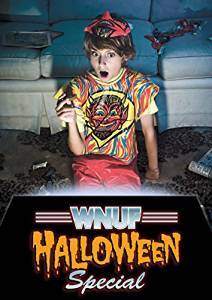
SRW: Welcome Chris! As your films are set in Baltimore (it’d be hard to miss the posters for The Wireand The Corner in a movie lobby in one of your earliest films), I’m assuming you hang your hat there as well. Why Baltimore? Luck of the draw or are you drawn to Baltimore’s quaint setting, crime rate and crab-cakes?
CL: People always ask if it’s like “The Wire”… and I think that’s parrrrrrrt of it… but really, if you take the casts of Don Dohler flicks, John Waters movies, and sprinkle in some of that David Simon grit… melt ‘em all together… that’s a decent portrayal of what this city is. It’s a truly bizarre mix, but there’s something incredibly charming in there. It’s weird and eclectic in a way that’s hard to describe unless you see it from multiple angles… every ten minutes in every direction is a different feel yet somehow that incongruence is what makes it even more compelling… even in its grossest, most worrisome moments.
The best part, however, is that the art scene here is driven by pure passion and not dollar signs. Even when the neighborhoods are gentrifying, the culture creators are still making work that’s fueled by pure creativity and bat-shit crazy ideas. There are opportunities to try new things here that few other places have.
SRW: Most of your horror films are low-budget wonders. In them, you manage a lot of nice set-ups and shots, giving the films a more expensive appearance than most other low-budget flicks accomplish. Did you have formal film schooling? Or did you graduate from the kamikaze school of trial by fire?
CL: I went to Towson University and graduated with a BS (n’yuk, n’yuk) in Film. Now, I teach screenwriting there. At Towson, I learned a lot more about theory than production (partly due to the fact that film was on the way out and digital video wasn’t “there” yet- this is on the cusp of DSLRs) and it was those trial-by-fire style war stories of micro budget film-making where I really honed my craft. When I made my first feature, I was the crew. That was it. Then, it was Jimmy George, myself and whoever we could get for boom operator for my second flick. Then, with each feature, the army got bigger… as we finished projects, people started seeing us as folks who could/would finish films and they believed in what we were doing. Every movie we learned crucial lessons that I probably should have figured out much earlier. ;) hahah.
SRW: Your films strike a nice balance between horror and comedy, rarely veering into over-kill parody (a tough task I’m finding out in my horror/ dark comedy books). Did you always set out to make them this way? Or did budgetary brain-storming force you into a comedic corner?
CL: It is exceedingly rare that a horror film scares me… and I don’t say that as a cocky bastard… but rather—they are cinematic comfort food to me. I’ve always loved when horror flicks embrace dark humor and awkward moments so I’ve set out to re-create that type of feel within my own work. Sometimes budget dictates approach with regard to a joke, but not often. To be honest, I HATE breaking the fourth wall and I despise most films that do… and ad-libs, outside of a few pieces of dialogue here and there, are very rare for us. We’re slaves to the script for sure.
SRW: Now I’m gonna ignore your early films, Faces of Schlock (the less said about that foot in the arse scene, the better off we’ll all be!) and Dead Teenagers. Mostly because I felt you were learning, experimenting. And they’re not quite as good as your later films. Anyway, Book of Lore was your first film that grabbed my attention. The movie’s unusual for you in that it’s more serious, less reliant on comic moments. It’s an effective, Lovecraftian horror-tainted film. Tell everyone what it’s about.
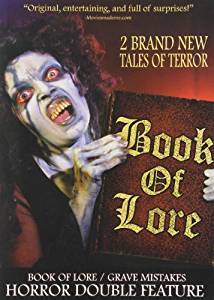 CL: It’s funny. I actually just re-watched “Book of Lore” for the first time in years with my screenwriting class to discuss how we could have re-written it to be stronger and less-convoluted. Some kids enjoyed it. Some kids laughed all the way through (and mostly at the “serious” parts). With “BoL”, we tried to make a more intricate, mystery-thriller with a novel-like approach to character and theme… the problem was… there are enormous plot holes and our skills as writers weren’t as developed as our ambitions. There are still plenty of cool ideas in it and if time/money were no object, I’d love to re-visit the themes again one day. However, watching “BoL” struggle for an audience, specifically- distribution wise was pretty heartbreaking. We learned an incredibly valuable lesson about what exactly marketing can do and how crucial it is to a micro budget flick. SRW: I really appreciate your ongoing battle against clichés. In Book of Lore, there’s a stand-out do-rag wearing sheriff, quite different than the usual stereotype. And how ‘bout the weird pumpkin-carving wheelchair-bound Christian (you have to see it, folks)? In fact, most of the characters are quite off-kilter in a refreshing manner. At times, the flick plays out like a surreal fever dream. When you write, do you set out to avoid clichés? (And I’d be remiss if I didn’t give a shout-out to your frequent writing and producing partner, Jimmy George. Surely he should shoulder some of the kudos/blame.)
CL: It’s funny. I actually just re-watched “Book of Lore” for the first time in years with my screenwriting class to discuss how we could have re-written it to be stronger and less-convoluted. Some kids enjoyed it. Some kids laughed all the way through (and mostly at the “serious” parts). With “BoL”, we tried to make a more intricate, mystery-thriller with a novel-like approach to character and theme… the problem was… there are enormous plot holes and our skills as writers weren’t as developed as our ambitions. There are still plenty of cool ideas in it and if time/money were no object, I’d love to re-visit the themes again one day. However, watching “BoL” struggle for an audience, specifically- distribution wise was pretty heartbreaking. We learned an incredibly valuable lesson about what exactly marketing can do and how crucial it is to a micro budget flick. SRW: I really appreciate your ongoing battle against clichés. In Book of Lore, there’s a stand-out do-rag wearing sheriff, quite different than the usual stereotype. And how ‘bout the weird pumpkin-carving wheelchair-bound Christian (you have to see it, folks)? In fact, most of the characters are quite off-kilter in a refreshing manner. At times, the flick plays out like a surreal fever dream. When you write, do you set out to avoid clichés? (And I’d be remiss if I didn’t give a shout-out to your frequent writing and producing partner, Jimmy George. Surely he should shoulder some of the kudos/blame.)CL: Most horror films at our budget level treat characters like pure cannon fodder. We’ve tried NOT to do that because empathy with our protagonists is what elevate movies with low/no budgets. As the small “g” gods of a screenplay, why bother with character clichés? Why not have some fun and make it weirder? Great storytelling is about reversing expectation and that’s what we try to do any chance we get.
SRW: Speaking of writing, the printed word seems to be a recurring motif in some of your films. The protagonist of Book of Lore is experiencing writing rejection. In Grave Mistakes, a character has writer block. Chris…autobiographical?
CL: Haha. I don’t think so actually. Writers as characters have a tendency to be more self-reflective in works on fiction and it seemed to work great in those two premises (“Book of Lore” and the “Dead Men Do Tell Tales” segment of “Grave Mistakes”)
SRW: I picked up on some other recurring motifs: fingernails in the eyes; creepy drawings of violent monsters; television commercials; slackers; George friggin’ Stover. Are you displaying Chris’ personal book of nightmares?
CL: Hahaha. If it was about my personal nightmares, I’d probably make movies about the diabetes-related body horrors and terrifying healthcare costs.
SRW: Okay, about George Stover… What’s up with him? For those not in the know, George is a pseudo-legendary actor from low-budget independent horror films dating back to the ‘80’s. He was Don (another almost-legendary independent horror director) Dohler’s go-to guy. But, as much as I love seeing George, at times he sorta takes me out of your films. He tends to play it broader than a lot of your younger (some very good) actors. (Although I thought his President’s Day performance worked). Intentional?
CL: George is basically my third Grandpa. We’ve been working with him since we’ve met him (during “Grave Mistakes”) and he’s been a stalwart supporter of our work. He’s a figure of legacy here in the Baltimore film community and he’s a huge fan of horror as well. George would say he’s not the best actor, but I think he’s far better than people give him credit for… and when he’s actually directed, I believe he’s turned in some fantastic performances. I wrote the role of Mr. Wright for him in “President’s Day” and I think he nails it.
SRW: Grave Mistakesis an anthology, something you’re apparently fond of. Do your inspirations include the great ‘70’s Brit anthologies from Amicus (Tales from the Crypt, Vault of Horror, The House that Dripped Blood, etc.)? They, too, share an equally perverse sense of black humor.
CL: Absolutely. I love anthologies… yet, ironically, I hate short films. I just don’t see the point in them. I wish I could understand what the dividing line is for me. Even though most anthologies are uneven, I think it’s really exciting to see how you can play around with storylines or simple ideas without binding time length requirements like a 90 minute feature.
SRW: I really liked the stylish credits of Grave Mistakes, very Dia de los Muertos colorful. Also, the music was cool. I thought it sounded similar to Gogol Bordello, a great gypsy/punk band. Okay, you do everything in your movies, Samuel Fuller journalistic-style (or maybe Jess Franco bargain basement). Music as well. Does this encompass the “surfabilly” opening theme, incidental dramatic stings and other background drama-enhancing sounds?
CL: It depends. So, I animated the title sequence to “GM” (poorly), but the theme is by a band called Skeletonbreath. I’ve composed the musical score for every film since “GM” as well… but usually if the song has lyrics, it’s soundtrack and not score. Although, sometimes I do sneak in some instrumentals that aren’t mine. I just love writing music and editing to it or vice versa. Typically before I start editing a feature, I spend a month writing “theme tracks” that I use for temp scores before I tweak the tunes to fit the final edit. I’m definitely big on the John Carpenter/Robert Rodriguez approach to filmmaker/composer.
Alright that's part #1 of "My Dinner with Chris." Return in two weeks for the two-fisted (drinking), no holds barred (except rasslin' holds), hard-hitting conclusion! In the meantime, get caught up with Chris LaMartina's fun films from Amazon and other retailers.
Published on November 18, 2016 03:00
November 11, 2016
Nature Bites (I mean mosquitoes, snakes, Bigfoot, etc.)
(EDITORIAL NOTE: I was really gonna talk about this week's election results. But I'm sick of it. And everyone's got an opinion. I'm done. Instead, I present this Wikipedia article on Nature.)
By now, readers should know I'm allergic to Nature. I break out in cold sweats just thinking about it. Camping sounds like pure torture to me.
 I once camped with my wife and her family. If it wasn't for the hot-tub and VCR player in the cabin, I honestly thought I might've died. I mean, a VCR player! What are we, in the dark ages? That guy in the Leonardo DiCaprio movie who crawled miles through frozen terrain with bear attack wounds? Feh, kid stuff. I mean, the cabin only had rom-com videotapes. Romantic comedies, for God's sake! Agony!
I once camped with my wife and her family. If it wasn't for the hot-tub and VCR player in the cabin, I honestly thought I might've died. I mean, a VCR player! What are we, in the dark ages? That guy in the Leonardo DiCaprio movie who crawled miles through frozen terrain with bear attack wounds? Feh, kid stuff. I mean, the cabin only had rom-com videotapes. Romantic comedies, for God's sake! Agony!
Not too long ago, my wife and I took a trip to Portland, Oregon. To tell you the truth, I was a little hesitant at first. Trees were mentioned. Lotsa trees. Lots and lots of trees. When we got there, my wife's bro and his family told us we were going hiking.
Uh-oh.
Couldn't sleep at all that night wondering about the horrors that awaited me the next day. (I mean, honestly, how is one supposed to, like, keep up on The Walking Dead or Game of Thrones when you're miles away from electricity? Civilization kicks mega-tail for a reason.)
And horrors it was. We walked WAY downhill to a waterfall, miles and miles of trudging through rugged terrain. Bugs strafed me. Sweat rolled off, a waterfall. I ended up hyperventilating like a whispery ventilator.
Along the way through the deep, agonizing trek, I spotted a pair of boys' underpants. Just sitting there on a rock. Scared the hell outta' me. I mean I've watched the documentary, Friday the 13th. How does a boy lose his underwear in nature? Did he get the shorts scared off him? Clearly, Jason was lurking nearby.
My brother-in-law and I made it near to the end. Not quite. We called it pretty and a day. We lurched back up, ludicrously winded and wetter than Niagra Falls. A little girl passed us, crying. My brethren in arms. But, no, Dan Haggerty that I am, I fought back the tears, trying to maintain a semblance of manhood. The allure of air conditioning dangled in front of me like a carrot, coaxing me back to level land.
Bro-in-law and I fairly collapsed in one another's arms at the top of the nightmare trail, vowing to God we'd be better people, just please, please, PLEASE never make us travel down to Hell again.
After that, I thought I'd put nature behind. But, no, nature struck back, still not finished with me. Once we got back to Kansas City, a plague of Oak tree mites broke out. Whaaa? My wife and I got shot-gun blasted with them.
 I'm telling you, nature bites!
I'm telling you, nature bites!
By now, readers should know I'm allergic to Nature. I break out in cold sweats just thinking about it. Camping sounds like pure torture to me.
 I once camped with my wife and her family. If it wasn't for the hot-tub and VCR player in the cabin, I honestly thought I might've died. I mean, a VCR player! What are we, in the dark ages? That guy in the Leonardo DiCaprio movie who crawled miles through frozen terrain with bear attack wounds? Feh, kid stuff. I mean, the cabin only had rom-com videotapes. Romantic comedies, for God's sake! Agony!
I once camped with my wife and her family. If it wasn't for the hot-tub and VCR player in the cabin, I honestly thought I might've died. I mean, a VCR player! What are we, in the dark ages? That guy in the Leonardo DiCaprio movie who crawled miles through frozen terrain with bear attack wounds? Feh, kid stuff. I mean, the cabin only had rom-com videotapes. Romantic comedies, for God's sake! Agony!Not too long ago, my wife and I took a trip to Portland, Oregon. To tell you the truth, I was a little hesitant at first. Trees were mentioned. Lotsa trees. Lots and lots of trees. When we got there, my wife's bro and his family told us we were going hiking.
Uh-oh.
Couldn't sleep at all that night wondering about the horrors that awaited me the next day. (I mean, honestly, how is one supposed to, like, keep up on The Walking Dead or Game of Thrones when you're miles away from electricity? Civilization kicks mega-tail for a reason.)
And horrors it was. We walked WAY downhill to a waterfall, miles and miles of trudging through rugged terrain. Bugs strafed me. Sweat rolled off, a waterfall. I ended up hyperventilating like a whispery ventilator.
Along the way through the deep, agonizing trek, I spotted a pair of boys' underpants. Just sitting there on a rock. Scared the hell outta' me. I mean I've watched the documentary, Friday the 13th. How does a boy lose his underwear in nature? Did he get the shorts scared off him? Clearly, Jason was lurking nearby.
My brother-in-law and I made it near to the end. Not quite. We called it pretty and a day. We lurched back up, ludicrously winded and wetter than Niagra Falls. A little girl passed us, crying. My brethren in arms. But, no, Dan Haggerty that I am, I fought back the tears, trying to maintain a semblance of manhood. The allure of air conditioning dangled in front of me like a carrot, coaxing me back to level land.
Bro-in-law and I fairly collapsed in one another's arms at the top of the nightmare trail, vowing to God we'd be better people, just please, please, PLEASE never make us travel down to Hell again.
After that, I thought I'd put nature behind. But, no, nature struck back, still not finished with me. Once we got back to Kansas City, a plague of Oak tree mites broke out. Whaaa? My wife and I got shot-gun blasted with them.
 I'm telling you, nature bites!
I'm telling you, nature bites!
Published on November 11, 2016 03:00
November 4, 2016
Here we go, Amurica. Hold on tight...
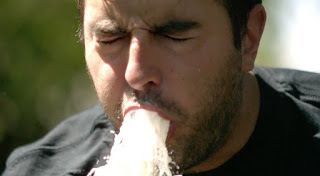 I know everyone's sick and tired of politics. Me, too. Britain has the right idea: four months politicizing then they're done in one.
I know everyone's sick and tired of politics. Me, too. Britain has the right idea: four months politicizing then they're done in one.Is that un-American? No way! The U.S. is in it to abuse it! Ram tough! Hoo-yeah! We can chew the ear off a corn-cob 'til it's deaf, spit it out like popcorn! Shock and awe! Amurica! Bet yer damn boots! Get off my door-step, NAFTA policy! Mucho bad hombres!
I apologize.
But, Tuesday, November 8th is the most important night in American history.
We're either in for the eradication of the world or status quo. Sure, "status quo" doesn't improve the country, doesn't read very sexy, but honestly, isn't it better? Nothing wrong with status quo.
A friend of mine is holding out for progression. Yeah, right, keep dreaming. Be glad to live through another four years!
I could go on and on about how one of the candidates isn't politically, professionally, emotionally, mentally or psychologically equipped to handle the job. Or the other one isn't exactly my fave, either, a few skeletons in the closet. Not naming names (but orange isn't a good color this year), because I'm tired. The pointless battles, arguments and debates fall on deaf ears on both sides. I've usually enjoyed healthy political verbal see-saws. Not so much this election.
The whole thing's played out. It's time to move on. I hope.
Let's sweat it out together. Our lives depend on it.

Published on November 04, 2016 03:00
October 28, 2016
I'm married to a bonafide Movie Star!
You guys quit fretting about the break-up of Brangelina. "Studney" is doing just fine. And I know you were wondering about us, the alliance of Stuart and Cydney.
Why?
Because my wife Cydney's been called a "movie star."
 Maybe you've seen her many excellent presentations on the Kansas City news channels, promoting the benefits of quality-sealed herbal supplements and the detriments of knock-off products derived from the stem of the plant rather than the root. Lots of that voodoo.
Maybe you've seen her many excellent presentations on the Kansas City news channels, promoting the benefits of quality-sealed herbal supplements and the detriments of knock-off products derived from the stem of the plant rather than the root. Lots of that voodoo.
Lately, though, I've been made painfully aware I walk in my wife's shadow.
My mom called me this week (a first! If I don't call her, she kvetches about it). Said she caught my wife's recent interview on TV. Mom was so bedazzled by her appearance ("I was just beside myself!" What does that even mean? Split personality disorder?), she couldn't pay attention to what my wife was saying. Not that it matters, of course, that I've been telling Mom about my wife's TV spots for over ten years. But Mom's from Missouri, the annoying "Show Me" state.
For crying out loud, even my daughter's boyfriend caught Cydney's latest performance.
I didn't know anything about it. The kicker is neither did Cydney before it happened, a last minute thing. The news rolled into her university where she teaches, said, "hey, you wanna talk stuff?"
No big deal to her, she's there go-to gal.
Had it been me, I'd have been sweating like a crooked lawyer running through a sprinkler.
But the biggest deal...the most awful incident regarding my wife's fame...
I took the dog to the vet this week. I walked in and the receptionist says, "Oh." Her shoulders folded, her smile went south and spread into a sneer. "I was hoping to see the movie star, your wife."
 It's time to drum up some of my own fame.
It's time to drum up some of my own fame.
Hey!
My third and (literally) explosive final Killers Incorporated book, Killer King , is here!
The only serial killer thriller/dark humor trilogy that features serial killer heroes against an evil big business corporation. First book, Secret Society , now available for the introductory price of .99!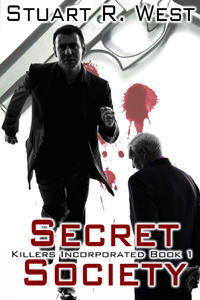
Why?
Because my wife Cydney's been called a "movie star."
 Maybe you've seen her many excellent presentations on the Kansas City news channels, promoting the benefits of quality-sealed herbal supplements and the detriments of knock-off products derived from the stem of the plant rather than the root. Lots of that voodoo.
Maybe you've seen her many excellent presentations on the Kansas City news channels, promoting the benefits of quality-sealed herbal supplements and the detriments of knock-off products derived from the stem of the plant rather than the root. Lots of that voodoo.Lately, though, I've been made painfully aware I walk in my wife's shadow.
My mom called me this week (a first! If I don't call her, she kvetches about it). Said she caught my wife's recent interview on TV. Mom was so bedazzled by her appearance ("I was just beside myself!" What does that even mean? Split personality disorder?), she couldn't pay attention to what my wife was saying. Not that it matters, of course, that I've been telling Mom about my wife's TV spots for over ten years. But Mom's from Missouri, the annoying "Show Me" state.
For crying out loud, even my daughter's boyfriend caught Cydney's latest performance.
I didn't know anything about it. The kicker is neither did Cydney before it happened, a last minute thing. The news rolled into her university where she teaches, said, "hey, you wanna talk stuff?"
No big deal to her, she's there go-to gal.
Had it been me, I'd have been sweating like a crooked lawyer running through a sprinkler.
But the biggest deal...the most awful incident regarding my wife's fame...
I took the dog to the vet this week. I walked in and the receptionist says, "Oh." Her shoulders folded, her smile went south and spread into a sneer. "I was hoping to see the movie star, your wife."
 It's time to drum up some of my own fame.
It's time to drum up some of my own fame.Hey!
My third and (literally) explosive final Killers Incorporated book, Killer King , is here!

The only serial killer thriller/dark humor trilogy that features serial killer heroes against an evil big business corporation. First book, Secret Society , now available for the introductory price of .99!

Published on October 28, 2016 03:00
October 21, 2016
Demons ate my mom!
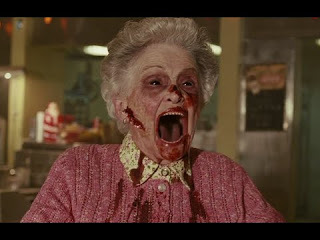 For many years, I had faith in my mom regarding politics. One of the few things we saw eye-to-eye on. We hoo-hahed over the ludicrous notion of Trump even running for president. I mean, seriously, a year ago, did anyone think it was possible? Bad hair, violent temper, quite crazy (real good).
For many years, I had faith in my mom regarding politics. One of the few things we saw eye-to-eye on. We hoo-hahed over the ludicrous notion of Trump even running for president. I mean, seriously, a year ago, did anyone think it was possible? Bad hair, violent temper, quite crazy (real good).Trump's hat toss was funny for a while. Not so much any more. But I could count on Mom to laugh along with me at his blatant insanity.
Yesterday, I called Mom. She brought up politics. I told her the badly-coiffed buffoon would get us into World War III. Hillary isn't my favorite politician either, but I expect her to at least keep the status quo. Best we can hope for these days.
My mom's response nearly stopped my heart. My pulse pounded in my ears, crying to me in a tiny cartoony-mouse voice, "Mom's tipped over!"
Out of nowhere, she blindsided me with, "You're wrong. Trump is the more religious man."
Huh.
Well, I kinda flipped out. My mom's holier-than-thou attitude added fuel to the fire.
Facts meant nothing to her. "Mom, this guy wants to start war! He hates everyone who's not white and straight! His haircut is a blatant physical representation of everything he lies about. It's just a juvenile game to him! He'll bring on Armageddon! We do NOT want him talking to foreign leaders, trust me!"
"You're wrong," she says, "he's led by God."
It's hard to argue with the Big Guy, but I tried anyway. "Trump's NOT a good Christian. All he wants is sexual harassment and destruction!"
"Yes, Stuart, but how long ago did those accusations happen?"
"Last week! The guy wants to violate and kill 'real good'! Mom!" I'm shamelessly screaming at this point. "There's a separation of Church and State for a reason!"
"Huh. Shouldn't be."
"Let's see... The sixteenth century had Henry VIII killing people in the name of Christianity so he could sleep with every woman he wanted. Heads were lopped! The Spanish Inquisition! You know how many people were killed because--"
"Huh. Spain. Not America."
"Ohhhh! We all came from immigrants! So many people have been put to death when religion gets in charge of government, it's crazy. And Trump's the worst. He--"
"I know what I know. We'll see who's right."
 "Trump reminds me of someone else, someone who called himself a Christian. What was his name...lessee...Adam, no, that's not it...Aidan? No...oh, I got it! Hitler! How'd that work out for everyone?"
"Trump reminds me of someone else, someone who called himself a Christian. What was his name...lessee...Adam, no, that's not it...Aidan? No...oh, I got it! Hitler! How'd that work out for everyone?"Pointless. I simmahed down. Sizzled out. The whole thing was weird. Where'd this suddenly come from? Particularly at a time when most people were bailing on the Trump train?
"Okay, Mom, I'll take you shopping next Tuesday."
"God will prove I'm right."
"Bye."
Published on October 21, 2016 03:00
October 14, 2016
Radioactive Crotch! (Sexy, yes?)
Well.
 Not too long ago, I flew down to Portland, Oregon to meet my wife to finish out her vacation (more about that peculiar, fascinating, flawed, wonderful city in the future).
Not too long ago, I flew down to Portland, Oregon to meet my wife to finish out her vacation (more about that peculiar, fascinating, flawed, wonderful city in the future).
At the airport, I stood in the security line, business as usual. This time I was extra careful to take off my belt, get everything out of my pockets. When I went through the scanning gizmo, an extremely nervous security guard held up an authoritative hand. Stopped me dead.
"Um, Christine?" he called out to his superior. Christine was too busy or chose to ignore the noobie. I glanced at my scan. Within the outline of my body (the kind you'd see drawn in chalk on sidewalks at crime scenes), my crotch was absolutely glowing! On fire! Yow!
Noobie and I were on our own, charting unpleasant landscapes.
Clearly neither the guard or I wanted to be in this uncomfortable situation. Timid, afraid to go to areas the he'd rather not explore, the guard grunted, sighed. At his touch, I jumped, squealed in fright. Hardly the start of a beautiful relationship. It took forever, too. Everyone stopped to watch. Checked out my glowing crotch scan.
"Um, sir, I'm going to have to pat down your buttocks and investigate your genital area. Do you require a private room?"
"What? No! But why--"
"I'm going to use the back of my hand on sensitive areas like this..." He wiped the back of his gloved hand on my shoulder. "Will that be all right?"
"I guess! But why is my crotch glowing with radiation! Am I dying? What's hap--"
"Here we go, sir."
Finally, the (very long) humiliation ended, both of us relieved. "You can go, sir."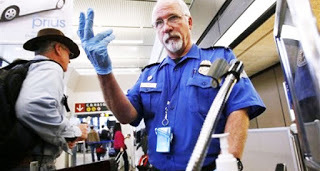
I had to clear my throat several times to be heard, but good sport that I am, I wanted the audience to know I wasn't a terrorist. "Ah...why'd the scan show that?" I pointed, refusing to mention "crotch," "groin," "genitals," amidst the crowd.
Noobie shrugged, said, "You probably moved. Or something." He didn't look sold on the theory.
Purple-faced, I skedaddled on board.
Once I landed in Portland, I told my wife about my misadventure. And warned her to beware my radioactive crotch.
She said, "Wait. Did you use that steroid cream?"
Let's back up a minute (and I probably should've led with that, but it woulda' been a worse tale)... Lately I've had sort of a heat rash on my thighs. Doc said to get this steroid cream, put it on there twice daily. "Jock itch," she said, although I'm not a jock and it didn't itch. But I applied the ointment nonetheless.
"Yeah, I did," I answered her.
"Sometimes," my wife explained, ever the professor, "the tiniest trace of elements in creams can show up."
AH! Maybe I'm not radioactive down yonder after all.
But recently I read a news story about a man who smuggled a monkey on board a plane. In his shirt. Sure, the machine picks up my crotch cream, but not a monkey?
 Not too long ago, I flew down to Portland, Oregon to meet my wife to finish out her vacation (more about that peculiar, fascinating, flawed, wonderful city in the future).
Not too long ago, I flew down to Portland, Oregon to meet my wife to finish out her vacation (more about that peculiar, fascinating, flawed, wonderful city in the future).At the airport, I stood in the security line, business as usual. This time I was extra careful to take off my belt, get everything out of my pockets. When I went through the scanning gizmo, an extremely nervous security guard held up an authoritative hand. Stopped me dead.
"Um, Christine?" he called out to his superior. Christine was too busy or chose to ignore the noobie. I glanced at my scan. Within the outline of my body (the kind you'd see drawn in chalk on sidewalks at crime scenes), my crotch was absolutely glowing! On fire! Yow!
Noobie and I were on our own, charting unpleasant landscapes.
Clearly neither the guard or I wanted to be in this uncomfortable situation. Timid, afraid to go to areas the he'd rather not explore, the guard grunted, sighed. At his touch, I jumped, squealed in fright. Hardly the start of a beautiful relationship. It took forever, too. Everyone stopped to watch. Checked out my glowing crotch scan.
"Um, sir, I'm going to have to pat down your buttocks and investigate your genital area. Do you require a private room?"
"What? No! But why--"
"I'm going to use the back of my hand on sensitive areas like this..." He wiped the back of his gloved hand on my shoulder. "Will that be all right?"
"I guess! But why is my crotch glowing with radiation! Am I dying? What's hap--"
"Here we go, sir."
Finally, the (very long) humiliation ended, both of us relieved. "You can go, sir."

I had to clear my throat several times to be heard, but good sport that I am, I wanted the audience to know I wasn't a terrorist. "Ah...why'd the scan show that?" I pointed, refusing to mention "crotch," "groin," "genitals," amidst the crowd.
Noobie shrugged, said, "You probably moved. Or something." He didn't look sold on the theory.
Purple-faced, I skedaddled on board.
Once I landed in Portland, I told my wife about my misadventure. And warned her to beware my radioactive crotch.
She said, "Wait. Did you use that steroid cream?"
Let's back up a minute (and I probably should've led with that, but it woulda' been a worse tale)... Lately I've had sort of a heat rash on my thighs. Doc said to get this steroid cream, put it on there twice daily. "Jock itch," she said, although I'm not a jock and it didn't itch. But I applied the ointment nonetheless.
"Yeah, I did," I answered her.
"Sometimes," my wife explained, ever the professor, "the tiniest trace of elements in creams can show up."
AH! Maybe I'm not radioactive down yonder after all.
But recently I read a news story about a man who smuggled a monkey on board a plane. In his shirt. Sure, the machine picks up my crotch cream, but not a monkey?
Published on October 14, 2016 03:00
October 7, 2016
Tips from a Confessed Pantser by Joan Curtis
I recently interviewed a writer who told me with certainty that she was not a pantser . “What is that?” I asked.
She explained that a pantser was a writer who writes by the seat of their pants. She explained that pantsers do not use outlines or other tools to organize their plots or characters. I listened patiently as she spoke because the more she said, the more I realized I might very well be a “pantser.”
For years I’ve described myself as an evolutionary writer. Usually I launch a story with a germ of an idea and then things start happening all around me that I didn’t expect. New characters walk on stage or a shocking, important event happens that shoots my original plan out of the water.
No one told me there was such a thing as a pantser writer. In the early days of my fiction writing, I attended a workshop where a well-know mystery writer explained how she constructed her books—with a plot outline and a chapter-by-chapter plan. I decided to give it a go.
After writing one chapter, suddenly a very interesting character popped on the scene. He was not one of the characters I had planned to introduce. But, there he was. His name is Quentin and he became one of my most important secondary characters in the Jenna Scali mystery series.
So, you may wonder if I don’t use an outline how in the world do I plan my books?
To answer that question, let me take you back in time when I began work on my award-winning mystery, The Clock Strikes Midnight. In the early stages, the story began with Marlene and was supposed to be a story about a woman going through a mid-life crisis. Marlene, however, had other ideas. She took me down an entirely different path.
As I worked with Marlene, other characters emerged. The first being her husband, Peter. But, it wasn't long before Peter took a backseat to Marlene's sister, Janie, who later became the protagonist for my book. Was the final story about a mid-life crisis? No way. It didn't take me long to realize I couldn't plan. My characters had their own ideas.
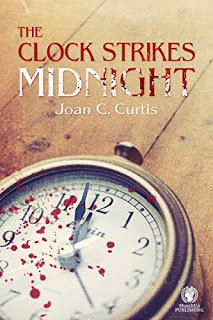 You’ll find many writers sharing tips on how to construct a novel using outlines. Here are some tips on how to construct a novel if you happen to be a pantser.
You’ll find many writers sharing tips on how to construct a novel using outlines. Here are some tips on how to construct a novel if you happen to be a pantser. Tip Number 1: Listen to your characters. When a character tells you they want to do something, let them do it. See where it takes you and the storyline. Allow yourself to be surprised.
Tip Number 2: Allow new characters to emerge even if it happens on your very last page. Okay, you’ll have to do some major editing, but let that character in. He or she had probably been tapping you on the shoulder for a long time and you ignored him. Now, look at the mess you’ve gotten yourself in! You should have listened to that character in the first place. Shame, shame, shame.
Tip Number 3: When in the middle of a scene, go deep inside yourself to create what might happen. Allow your brain to flow like a stream as your fingers dance across the keyboard. What you write will probably read like crap the next day. But, then again, maybe it won’t.
Tip Number 4: Don’t worry about editing from the beginning. Wait to edit. I say this unless your story does a complete about face. In that case, just start over from that point. Usually what happens, however, is the story moves forward, and you can go back and make the necessary changes once you have it all on paper.
Tip Number 5: Don’t let the outliners intimidate you! Creativity is messy. Many an artist begins a canvas with one idea in mind and suddenly everything changes. Sometimes, they have to paint over what they’ve painted or they destroy the original canvas. I can imagine Van Gogh painting that way. Can’t you?
Tip Number 6: You must be a ruthless editor. The one advantage the outliner has over the pantser is in the editing process. For me (as a confessed pantser), editing is a nightmare. Imagine for a moment that you thought you were writing a book about one thing and then it takes off in a different direction. That means the early scenes you created become meaningless. Pantsers must be ruthless editors. We cannot get too attached to our scenes. It if doesn’t move the story along, let it go.
Here’s the rub. Writers who outline think of us pantsers as lazy. We simply don’t have what it takes to map out a big long piece like a novel. Writers who are pantsers think outliners aren’t creative. They write like robots.
In truth wonderful works of fiction are produced by both outliners and pantsers. Just like Van Gogh and Van Meer are two of my favorite artists. The styles are different, neither better than the other.
Okay, I confess, I’m a pantser and proud of it. What about you?
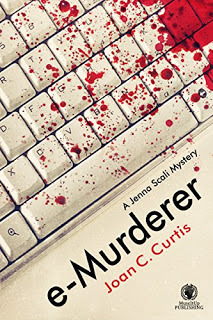
Joan C. Curtis is the award-winning, multi-published author of The Clock Strikes Midnight and e-Murderer and her most recent release, Murder on Moonshine Hill. Her website which includes her blog is http://www.joancurtis.com
Published on October 07, 2016 03:00



